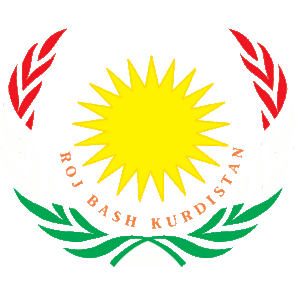1 March – 5 April 1991 Uprising in Iraq & birth of Kurdistan
The 1991 uprisings in Iraq were a series of popular rebellions in northern and southern Iraq in March and April 1991 after the Gulf War. The mostly uncoordinated insurgency, often referred to as the Sha'aban Intifada among Arabs and as the National Uprising among Kurds, was fueled by the perception that then Iraqi President Saddam Hussein was responsible for systemic social repression and had become vulnerable to regime change. This perception of weakness was largely the result of the outcome of two prior wars: the Iran–Iraq War and the invasion of Kuwait, both of which occurred within a single decade and devastated the economy and population of Iraq.
Within the first two weeks, most of Iraq's cities and provinces fell to rebel forces. Participants of the uprising were a diverse mix of ethnic, religious and political affiliations, including military mutineers, Shia Arab Islamists, Kurdish nationalists, and far-left groups. Following initial victories, the revolution was held back from continued success by internal divisions as well as a lack of anticipated American support. Saddam's Sunni Arab-dominated Ba'ath Party regime managed to maintain control over the capital of Baghdad and soon largely suppressed the rebels in a brutal campaign conducted by loyalist forces spearheaded by the Iraqi Republican Guard.
During the brief, roughly one-month period of unrest, tens of thousands of people died and nearly two million people were displaced. After the conflict, the Iraqi government intensified a prior systematic forced relocation of Marsh Arabs and the draining of the Mesopotamian Marshes in the Tigris–Euphrates river system. The Persian Gulf War Coalition established Iraqi no-fly zones over northern and southern Iraq, and the Kurdish opposition established the Kurdish Autonomous Republic in what is now commonly referred to as Iraqi Kurdistan.
Link to Full Article:
https://en.wikipedia.org/wiki/1991_uprisings_in_Iraq
Welcome To Roj Bash Kurdistan


1 March – 5 April 1991 Uprising in Iraq & birth of Kurdistan
2 posts
• Page 1 of 1
1 March – 5 April 1991 Uprising in Iraq & birth of Kurdistan
Good Thoughts Good Words Good Deeds
-

Anthea - Shaswar

- Donator

- Posts: 29419
- Images: 1155
- Joined: Thu Oct 18, 2012 2:13 pm
- Location: Sitting in front of computer
- Highscores: 3
- Arcade winning challenges: 6
- Has thanked: 6019 times
- Been thanked: 729 times
- Nationality: Kurd by heart
Re: 1 March – 5 April 1991 Uprising in Iraq & birth of Kurdi
1991 uprising in Sulaymaniyah
The 1991 uprising in Sulaymaniyah was one of the biggest 1991 uprisings in Iraq. Sulaymaniyah, a Kurdish city of over 100,000 population, was the first Iraqi city to be captured by rebels and the last one to fall.[2] The city was recaptured by Kurdish rebels, after the Peshmerga launched a new offensive on 20 July.
Since the autonomy agreement collapsed in 1974, Kurds had been fighting an armed insurgency against Saddam's regime. After the Gulf War heavily damaged the Iraqi military and an uprising began in Southern Iraq, Jash (Kurdish militia used by Saddam Hussein's regime to fight Peshmerga) deserters, seized control of the city of Raniya with support of the local population. Many of the militia took sides with the Peshmerga. The revolutionary feeling spread to the rest of Kurdistan, where people took to the streets and Peshmerga entered the cities and seized control of Raniya, Chawar Qurna, Koi-Sanjaq, Sulaymaniya, Halabja, Arbat, Arbil, Duhuk, Zahku and Kirkuk.[3]
Link to Full Article:
https://en.wikipedia.org/wiki/1991_upri ... laymaniyah
The 1991 uprising in Sulaymaniyah was one of the biggest 1991 uprisings in Iraq. Sulaymaniyah, a Kurdish city of over 100,000 population, was the first Iraqi city to be captured by rebels and the last one to fall.[2] The city was recaptured by Kurdish rebels, after the Peshmerga launched a new offensive on 20 July.
Since the autonomy agreement collapsed in 1974, Kurds had been fighting an armed insurgency against Saddam's regime. After the Gulf War heavily damaged the Iraqi military and an uprising began in Southern Iraq, Jash (Kurdish militia used by Saddam Hussein's regime to fight Peshmerga) deserters, seized control of the city of Raniya with support of the local population. Many of the militia took sides with the Peshmerga. The revolutionary feeling spread to the rest of Kurdistan, where people took to the streets and Peshmerga entered the cities and seized control of Raniya, Chawar Qurna, Koi-Sanjaq, Sulaymaniya, Halabja, Arbat, Arbil, Duhuk, Zahku and Kirkuk.[3]
Link to Full Article:
https://en.wikipedia.org/wiki/1991_upri ... laymaniyah
Good Thoughts Good Words Good Deeds
-

Anthea - Shaswar

- Donator

- Posts: 29419
- Images: 1155
- Joined: Thu Oct 18, 2012 2:13 pm
- Location: Sitting in front of computer
- Highscores: 3
- Arcade winning challenges: 6
- Has thanked: 6019 times
- Been thanked: 729 times
- Nationality: Kurd by heart
2 posts
• Page 1 of 1
Who is online
Registered users: Bing [Bot], Google [Bot]
















